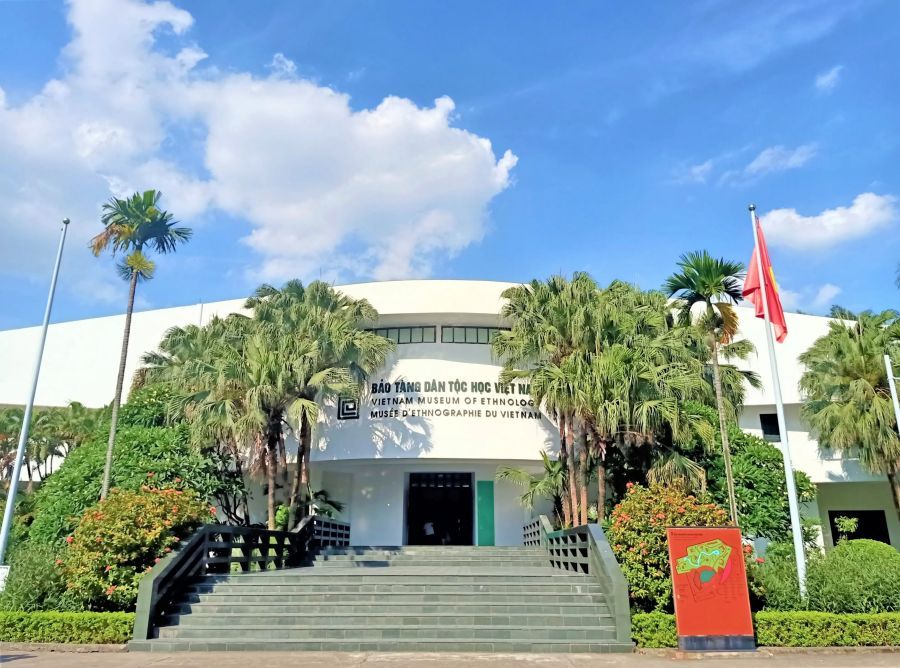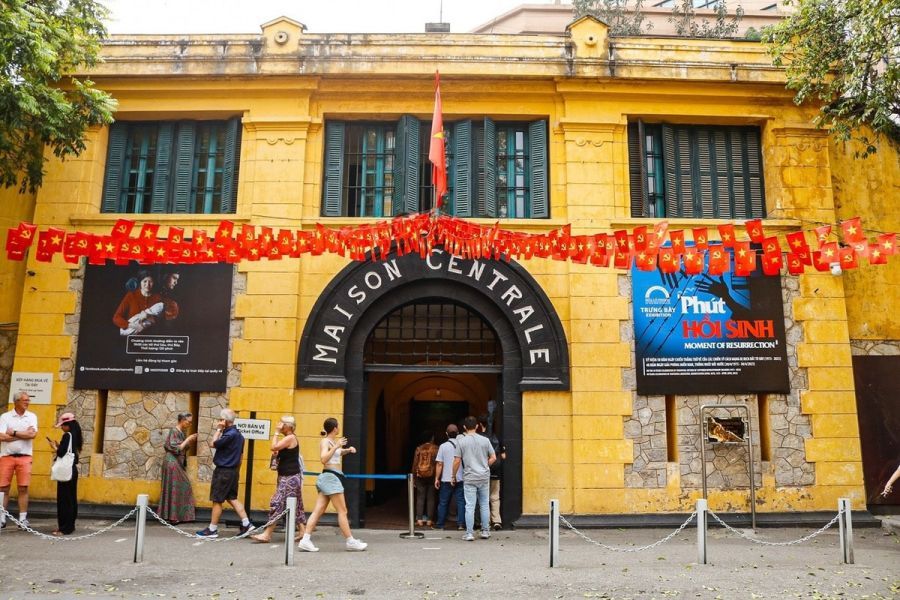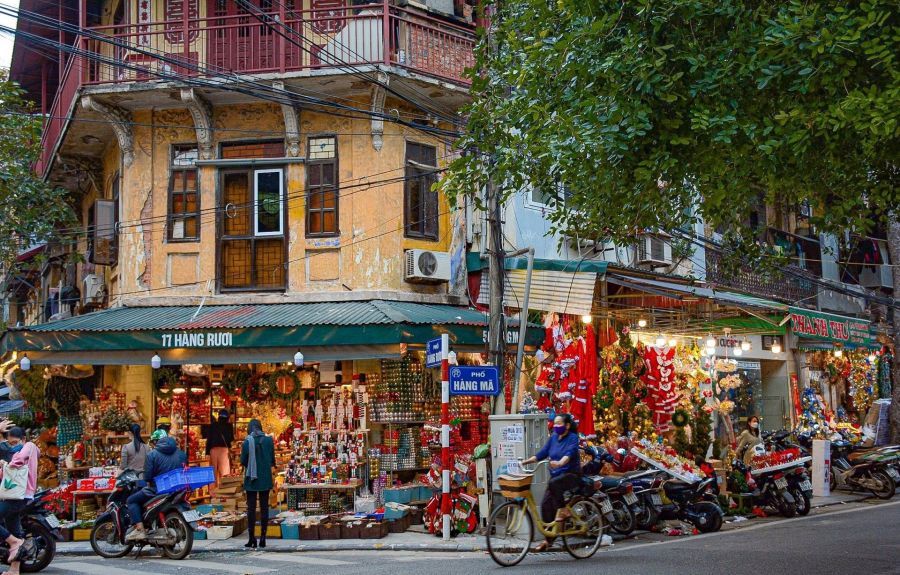Hanoi Opera House: The Iconic French Colonial Theater
The Hanoi Opera House is one of the most popular cultural buildings of Hanoi, the capital of Vietnam. With its French colonial architecture and regular live concerts, it’s a must-see for travelers looking for art, history and culture.
Table of Contents
ToggleIntroduction To The Hanoi Opera House
A wonderful building that is the epitome of the French colonial era, the Hanoi Opera House is a must-see for those visiting Hanoi. With spectacular architecture. It draws the eye from across the city. While it’s beautiful to look at, its rich history and modern functions in the arts have placed this as a top destination for locals and international visitors. Stepping into this iconic building, you will surely be surprised by the collection of craft paper, rattan, and bamboo products or garments perfectly designed to love the Hanoi soul of art.
History Of The Hanoi Opera House
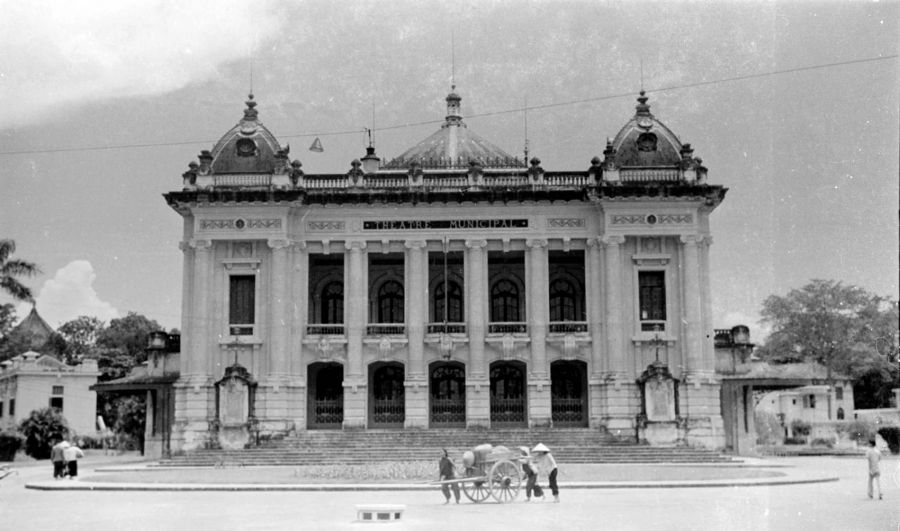
The Hanoi Opera House is one of the significant works of the French colonial government, built between 1901 – 1911. The architects took their inspiration largely from the renowned Opéra Garnier in Paris, hoping to transplant the grandeur and style of the former to the Far East. The Opera House was opened, and in no time, the tally of royal performances, directorial debuts, and theatrical firsts in the House had become a cultural attraction with VIP delegations of politicians, artists, entertainers, and royalty.
In its long history, the Opera House has seen a lot in Vietnam’s progress. It endured during the colonial occupation, witnessed the battle for independence, and now itself emanates culture in contemporary Vietnam. The building itself has stood through wars and political transitions, a symbol of resilience. Today, it is not only a place that houses a theater, but also a monument that represents Hanoi’s rich culture in all of its vivid and multifaceted history.
Unique Architecture Of Hanoi Opera House
The Hanoi Opera House stands as a magnificent testament to French colonial architecture. Located in the centre of Hanoi, the attraction not only embellishes the entire urban area, but it is a testament to the magnificent architectural styles from early 20th-century Vietnam.
Grand Facade And Exterior Details

The building of the Hanoi Opera House is an aesthetic hybrid of beauty and yearning for the French colonial days. It’s very symmetrical, with regular spacing of columns and arches. One of its most striking features, perhaps, is its ‘warm, sun-kissed yellow’ exterior, the charming colour of many well-preserved colonial buildings in Hanoi. Contrast that bold color with the white neoclassical details, and it’s lovely on the eyes.
Lovers of art can enjoy the artistic iron forging of the balconies, the sculptures and decorative figures on the different parts, and the careful friezes. The building’s roof, with its instantly recognizable green glazed tiles and sleek dormer windows, further contributes to the French-inspired appearance, making it not only easily identifiable but also the subject of many photography enthusiasts.
Lavish Interior Design And Opulent Halls
You feel like you’ve entered the ultimate in luxury and artistic extravagance when you walk into the Hanoi Opera House. The interior was designed to make the visitors feel like they were in one of Europe’s grand opera houses. The lobby impresses with polished floors and high ceilings, establishing a luxurious mood that you carry with you throughout the building.
The Main Auditorium
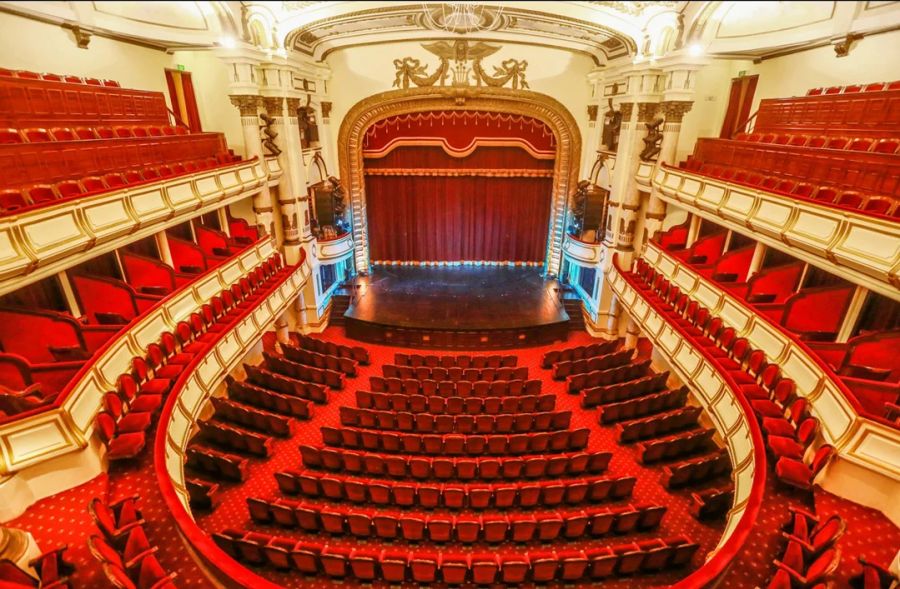
The main auditorium of the Opera House is its centrepiece. This immense hall features gorgeous, thick red velvet seating, contrasting with the gold-plated features. The ceiling is a masterpiece in its own right, with delicate frescoes and intricate plasterwork drawing the eye to the stunning central chandelier.
This enormous chandelier covers multiple levels of one grand sweep, and lights up the whole hall, turning your special day into a real celebration. The auditorium was designed to maximize acoustics for classical music and opera performances, a fact that some believe is revealing of the architectural know-how with which the place was built.
Elegant Staircases And Foyers
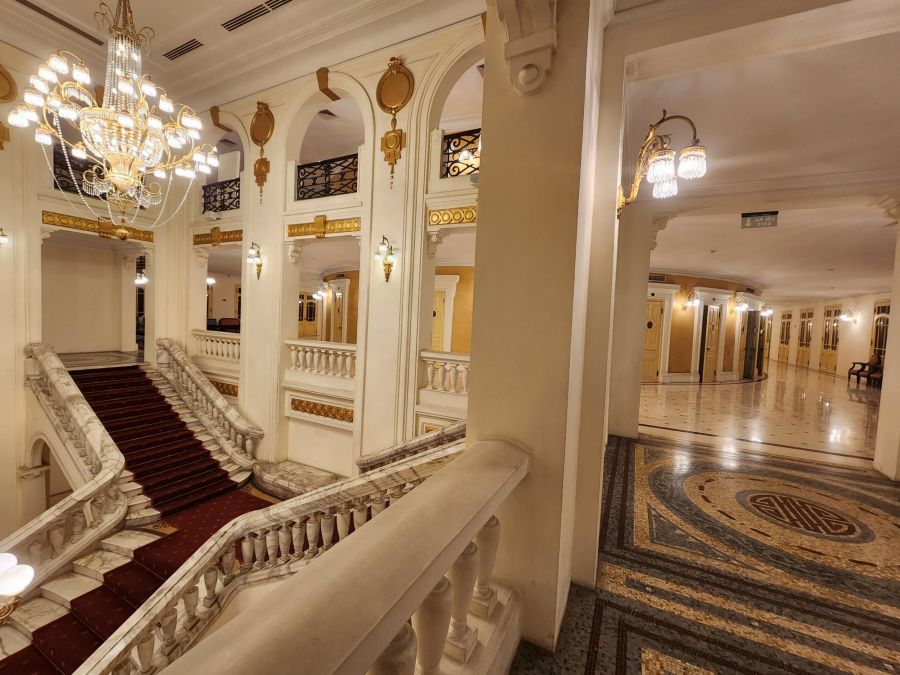
What stands out in the whole building are the broad, gracious staircases that take visitors from level to level. These are not just functional; they are architectural sights, meant to impress, often built out of marble or polished wood, with ornate railings.
The numerous foyers and hallways that access the auditorium are similarly opulently appointed with period furnishings, full-length mirrors, and further chandeliers. These were conceived as large courtyards for the public to gather before and after performances, where they could socialize in a more formal context. A concern for detail and a passion for offering a multi-sensorial and extravagantly luxurious cultural experience are present in each corner of the interior.
3 Cultural Experiences You Shouldn’t Miss
A trip to the Hanoi Opera House is not just sightseeing; it’s an opportunity to connect with the cultural pulse of the city. It can be the dynamic performances or the stunning piece of history that you can step inside. The Opera House provides unforgettable moments for art, music, and Vietnamese culture aficionados. Here are three cultural things you can’t miss:
Watch A Live Performance
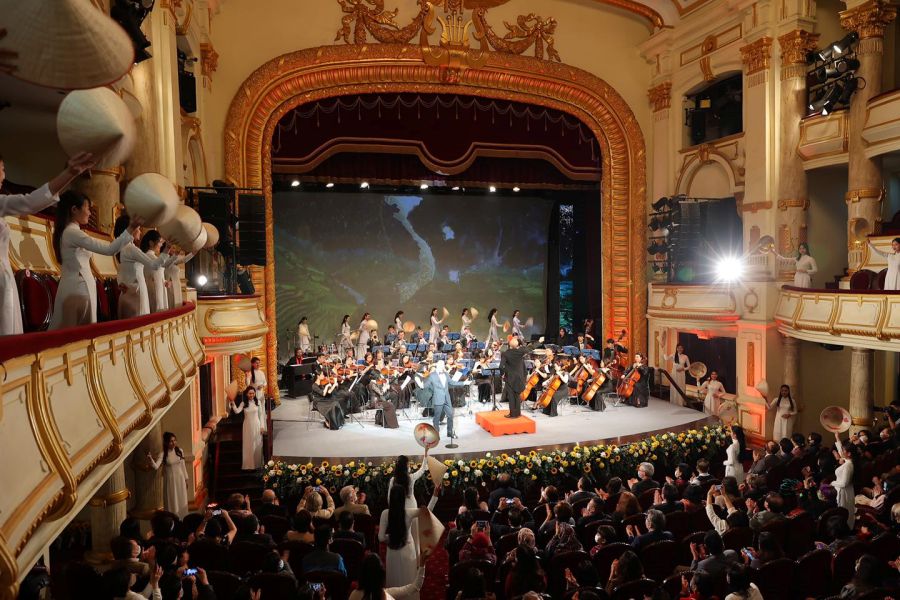
One of the most rewarding ways to experience the Opera House is to see a live show. The space often has a wide range of shows, featuring both international and Vietnamese artists. You may enjoy seeing a traditional opera, ballet, or classical music show, or perhaps traditional Vietnamese music and dance takes centre stage and can give you a great introduction to the local culture.
So that you don’t miss a specific performance, you are strongly encouraged to review the Hanoi Opera House schedule 2025 in good time before you arrive at the venue. It’s always a good idea to book your tickets in advance, the popular ones especially have a tendency to sell out sooner.
Take A Guided Historical Tour
If you’re pressed for time or looking for a good daytime activity, you will love going on a tour of the Opera House. These tours run in Vietnamese and English and offer visitors a glimpse into the building’s rich colonial history, artistic heritage, and architectural design.
You’ll have the opportunity to go into the grand foyer, walk through the main auditorium, and have a peek at the behind-the-scenes areas, like makeup rooms or costuming areas (if that’s part of the tour). On the route, your guide will recount stories of significant historical events and iconic performances that have taken place inside these beautiful walls.
Admire The Exterior And Enjoy The Surroundings
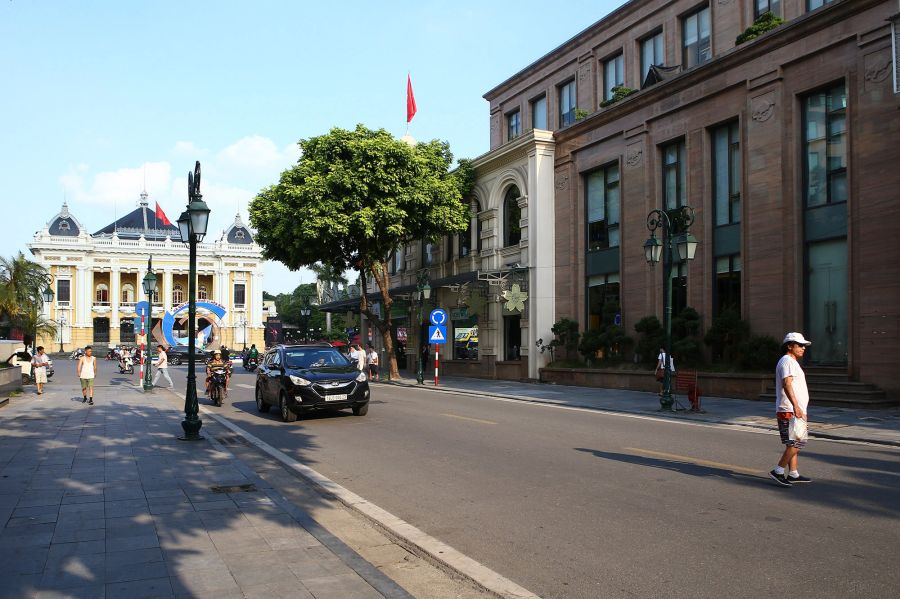
Even if you don’t go in, the area surrounding the Hanoi Opera House to which it returns is quite nice. The building is in the heart of the French Old Quarter in Hanoi, with its wide boulevards, colonial-era buildings, and luxury boutiques. The large square in front of the Opera House is popular with tourists and locals, either posing for pictures or sitting on the steps. A few streets away, you will walk around Trang Tien Street, pay a visit to art galleries, or have a cup of Vietnamese coffee in some local cafés lively atmosphere.
Entrance Fee
About the Hanoi Opera House entrance fee, there isn’t a cost just to enter the grounds to walk around. The fees primarily apply when you wish to attend a specific performance or participate in an organized guided tour of the building’s interior.
| Ticket Type | Price (VND) | Notes |
| Guided Tour Ticket | 120,000 | Includes access to the main hall |
| Performance Tickets | 400,000 – 2,000,000 | Depending on the show & seating |
| Children under 6 | Free | Must be accompanied by adults |
| Students (with ID) | 50% off | For selected performances |
Hanoi Opera House Opening Hours
The Hanoi Opera House opening hours for visitors are available for ticket purchase and scheduled tours are between 7 AM and 5 PM. For those seeing a show, the doors open roughly an hour before the show’s start time, giving guests plenty of time to arrive, find a place to sit, and get a feel for the atmosphere.
Best time to visit
The peak performance season also tends to coincide with two of Hanoi’s major tourist seasons (roughly September-November and March-April, when the weather is at its nicest). In these times, you may see a more diverse range of shows and events.
How To Get To The Hanoi Opera House
The Hanoi Opera House is situated in a beautiful location in the center of Hanoi, which can be easily reached from all over Hanoi. It’s in the Hoan Kiem district, where there are many other well-visited attractions.
- By taxi: This is a very accessible alternative, and there are plenty of taxis to be found all over town. Apps like Grab, a ride-hailing app, are widely used and provide transparent pricing. It is perfect for a comfortable and straightforward trip.
- Motorbike taxi (Xe Om): For a more local and generally quicker experience, particularly in heavy traffic, “xe om” (motorbike taxi) is common. And don’t forget to negotiate the fare before take-off.
- Walking: If you are hanging out in the tourist-trap Old Quarter, the Opera House might be walkable or only a short ride away. You can then stroll at a leisurely pace through the picturesque streets, soak up the local life, and admire the architecture.
- Public buses: Hanoi is served by an extensive public bus network. You have lots of different routes to get to the Opera House. It’s the cheapest option, but you may need to plan to figure out what bus to catch and where to get off.
Here are the costs and travel times for each type of transport:
| Transportation Method | Estimated Travel Time (from Old Quarter) |
Estimated Cost (VND) |
| Taxi / Ride-hailing App | 5 – 15 minutes | 50,000 – 100,000 |
| Motorbike taxi (Xe Om) | 5 – 15 minutes | 20,000 – 50,000 |
| Public buses | Varies (depending on route) | 7,000 – 10,000 |
| Walking | 5 – 15 minutes | Free |
Things To Know Before Traveling To The Hanoi Opera House
To make the most of your visit to the Hanoi Opera House, also keep in mind these things before you go there. Even if you have tickets to a show, are going on the tour, or just want to explore the buildings, a few pieces of advice will help make your trip as efficient and enjoyable as possible.
- If the show is your priority in Hanoi Opera House booking, its performance schedule is something you cannot afford to miss in 2025. Show dates, times, and available tickets also vary immensely, and hotter shows typically sell out faster.
- For the evening classical concert or performances, the dress code is smart-casual or semi-formal. Although there isn’t the same kind of official dress code as in some Western opera houses, the venue and the art form are generally respected.
- Try not to be too casual, shorts and flip-flops are not acceptable dress for an evening function.
- Respect the limitations on photography that are in place, particularly as far as taking photos inside the performance hall. During performances, photography and videography are commonly forbidden because they disrupt performers and other audience members.
- You should make reservations for performances whenever possible. This can usually be arranged through the Opera House’s official site or one of its licensed ticket vendors online.
- If you’re attending a show, you should arrive at least 30 to 45 minutes ahead of the performance. This leaves you plenty of time to retrieve your tickets (if you haven’t already done so) and discover the theater.
- You should combine your visit with a stroll around the nearby Hoan Kiem Lake, visiting the nearby Vietnam National Museum of History, or exploring the charming streets with their colonial architecture and cafes.
Final Thoughts: Is The Hanoi Opera House Worth Visiting?
The Hanoi Opera House is definitely a place for every tourist in the capital of Vietnam to visit. So much more than a beguiling building to look at, it is a piece of living history, a powerful symbol of cultural exchange, and a busy arts centre in Hanoi. Schedule your tour today with SeniWorld to make your cultural trip to Hanoi a worthwhile experience and guided service!








